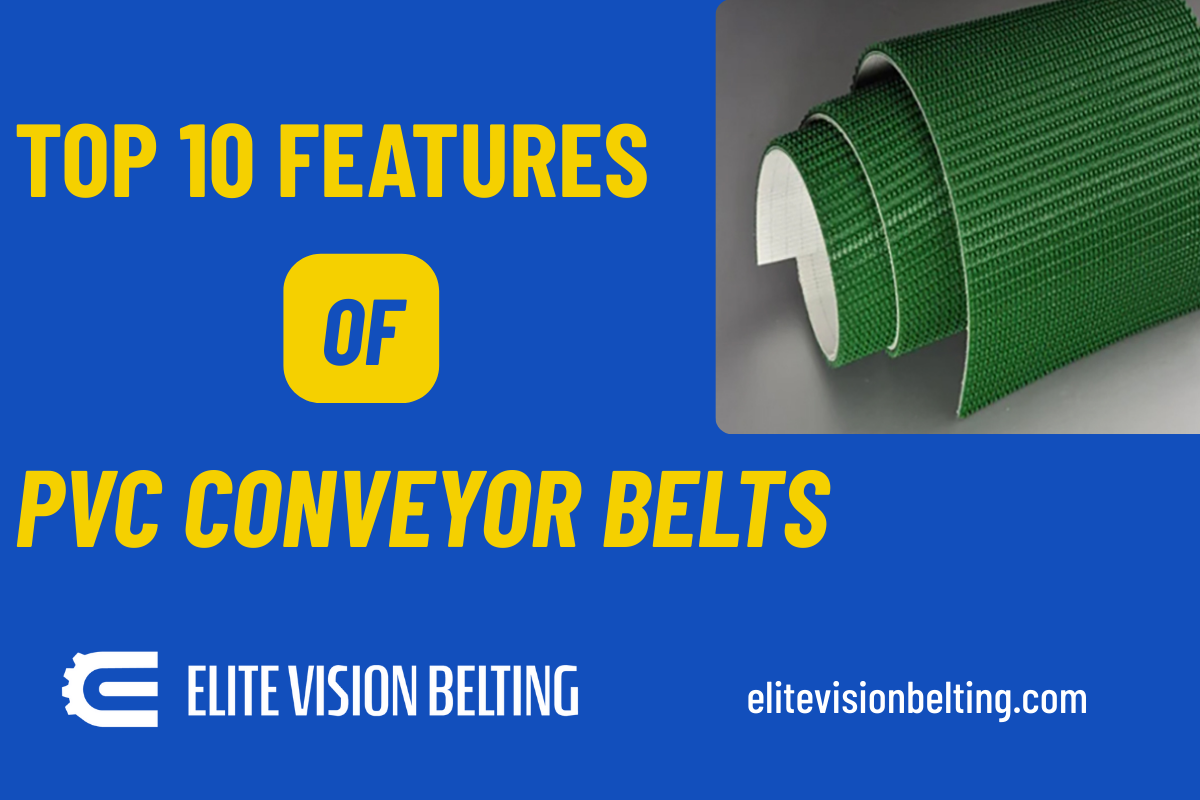Introduction
Conveyor belts have a significant role in industrial processes as they allow for the well-organized transport of materials and products. Choosing the right conveyor belt for optimum productivity and minimum downtime, along with ensuring the safety of workers, is a dynamic process. The nature of the material, the working environment, and industry necessities are some of the aspects that affect the selection. Early wear, safety risks, and higher operating costs might result from inappropriate belt choice.
Companies must examine several conveyor belts and assess their unique demands to arrive at an informed choice. In this blog, we will go over important considerations for choosing a belt for conveyance as well as the different kinds that are on the market.
Factors to Consider
Material Type
The particular kind of material being delivered has a critical influence in selecting the correct conveyor belt. Take into account elements like
· Weight: More tensile strength is needed in wider belts to manage more material.
· Abrasiveness: Wherever the material is abrasive or abrasive, a heavy-duty, wear-and-tear-resistant belt would be necessary.
· Temperature Sensitivity: Heat- and cold-resistant belts are required for materials subject to high or low temperatures.
· Chemical and Moisture Exposure: Chemical- and moisture-resistant belts are to be used on some materials, e.g., foodstuffs.
For such sensitive applications as food and drugs, using an incorrect material causes contamination and deterioration with decreased belt life.
Operational Environment
The operation of a conveyor belt greatly depends on the surrounding environment. Some of the things to be considered are
· Temperature and Humidity: Rubber belts may deteriorate at elevated temperatures, and rust and sliding may be triggered by excess moisture.
· Chemical Exposure: Companies dealing with harmful chemicals require belts resistant to corrosive substances.
· Debris and Dust: Too much dust will eventually result in belt wear and impact tracking.
Evaluating environmental parameters guarantees the conveyor belt system's durability and effectiveness.
Load Capacity
Each conveyor belt can support a certain amount of weight before breaking or wearing down too quickly. Companies need to assess
· Weight Distribution: Inequitable loads may result in excessive belt wear and tracking problems.
· Bulk vs. Packaged Materials: Conveyor belts made for packaged goods handling are not the same as those made for bulk material transportation.
· Intermittent vs. Continuous Use: Though definite belts are more suitable for irregular uses, others are meant for constant operations.
By selecting a belt with appropriate load-carrying capacity, difficulties and costly interruptions might be avoided due to overloading.
Speed Requirements
A conveyor belt's operating speed is determined by the kind of material and production requirements. Think about:
· Slow Speeds: Perfect for fine-grained sorting procedures or fragile objects.
· Medium Speeds: Applied in typical packaging and production settings.
· High Speeds: Ideal for big centers of distribution and the handling of bulk materials.
Selecting the incorrect speed-rated belt can lead to high wear, material spillage, & inefficiencies.
Longevity and Durability
When you buy a stronger conveyor belt, you save money on replacements and increase productivity. Some of the factors that contribute to durability include
· Composition of material: Rubber and metal belts are stronger than cotton belts.
· Reinforcements: Some belts are reinforced with layers for strength and durability.
· Requirements for Maintenance: Belts that need to be adjusted and fixed regularly may end up costing more in the long run.
A robust belt ensures smooth performance and reduces downtime for maintenance.
Types of Conveyor Belts
Conveyor belts come in various varieties, each intended for a particular use.
1. PVC Conveyor Belts
· PVC conveyor belts are rationally priced and lightweight due to their polyvinyl chloride (PVC) construction.
· Ideal for food processing, pharma, and packaging industries.
· They are best suited for sanitary purposes since they are water and chemical resistant.
· Because it is less long-lasting, it is suitable for light but not heavy use.
2. Rubber Conveyor Belts
· Remarkable for their strength and capacity to carry heavy loads.
· Enough for heavy-duty applications like mining, construction, and handling bulk materials
· Abrasive, impact, & temperature-resistant.
· Needs frequent upkeep to avoid wear and cracking.
3. Modular Plastic Conveyor Belts
· Ideal for enterprises needing curving and inclined conveyor systems, this flexible and durable product is made up of interconnecting plastic modules.
· Individual parts are simple to clean and change, which reduces maintenance expenses.
· Regularly used in the food and beverage sector.
4. Metal Conveyor Belts
· Made of materials like stainless steel, it is resistant to heat.
· Enough for high-temperature applications like baking and welding.
· Provides excellent strength, though conceivably at a cost.
· To avoid wear and rust, it needs to be lubricated and maintained appropriately.
Among the important decisions that influence productivity, safety, & efficiency is the decision regarding the choice of the proper conveyor belt. The parameters, such as material, environment of work, load capacity, speed, and durability, require proper consideration from the companies. In addition to this, the correct selection of the type of belt—metal, PVC, PU conveyor belt, rubber, or modular plastic—ensures life and wonderful performance.
Choosing the right one maximizes productivity and avoids replacement expenses. For professional guidance and optimized solutions, consult Elite Vision Belting if you have no idea which conveyor belt would be best for your business purposes!

.png)
.png)

.jpg)
